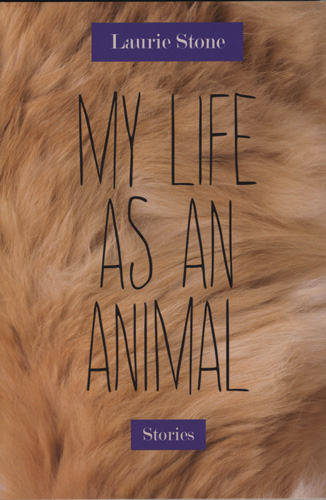My Life as an Animal
Written in a voice and style reminiscent of memoir, Laurie Stone’s collection of linked short stories My Life as an Animal traces the strengthening and breaking of friendships and family ties in twenty-six stories. The narrator of the stories dances through time—from adolescence to her current life at sixty—and place—New York, Arizona, California, and England. True to life, characters appear and reappear in unexpected ways, affecting others in the past and present.
Written in a voice and style reminiscent of memoir, Laurie Stone’s collection of linked short stories My Life as an Animal traces the strengthening and breaking of friendships and family ties in twenty-six stories. The narrator of the stories dances through time—from adolescence to her current life at sixty—and place—New York, Arizona, California, and England. True to life, characters appear and reappear in unexpected ways, affecting others in the past and present.
One character who the narrator often thinks back to throughout the collection is her mother, Toby. Though Toby is imperfect and embarrassing, “She will say someone is ugly when they are close enough to hear,” the narrator loves her. In the story “Toby Dead” the narrator depicts the decline in Toby’s health with humor, as only a loving daughter can:
At eighty-nine, my mother learns her arteries are clogged with plaque like tubes with toothpaste. She brushes off the news and goes into cardiac arrest. A squat little machine that looks like R2-D2 is attached to her by a vacuum cleaner hose, and my sister is holding a clipboard. Ellen is tapping the clipboard with a long, hard fingernail saying, “You have two choices, Ma, sign the form or dead. Which is it, Ma, the form or dead?” I am glancing from the machine to my mother, who looks like a chimp caught in a lab experiment. She trains her beady eyes on Ellen, as if she is being conned, but she takes the pen in her monkey paw and signs on for three more years of life—as well as a stroke and the twenty-four-hour care of home aides.
Some stories in the collection wander in the way an essay might, closely examining an idea as the narrator turns it over and over. Sometimes this examination comes through conversation, such as with the narrator’s boyfriend Richard. Sometimes it’s a combination of conversation and introspection. In the story “Gesche” the narrator meets a pediatric oncologist, and over breakfast the two women discuss the men in their lives.
She took my hand, and I saw green flecks in her eyes. She smiled uncertainly and said, “I don’t take what men say seriously. Men are not their words.”
I thought, If we are not our words, what are we? Then I wondered what we might be apart from words. Gesche was reaching for the everything that does not exist, and I thought, Don’t do it. Don’t give yourself away. Then I thought, Why not?
Stone’s close observation and precise detail also invite the narrator’s essay-like thinking on the page, often in the form of memories:
I remember a poisoned rat that came to die on our patio. Its fur was fluffy, its ears tiny trumpets, its nose a needle, really pointy, with whiskers on either side, delicate as eyelashes. For several hours the rat breathed slowly until finally it fell over, and I thought, Whatever you look at long enough comes to look like you.
Stone also uses these memories to return to other characters in the collection, to show how the past affects the present, decades after the events:
When I was four, in a clothing store I picked out an expensive dress embroidered with strawberries. The sales-woman disapproved of a child so young making the choice. My mother remembered the incident because she told the woman to mind her own business. I remember the story because my mother stuck up for me.
Though some stories, mostly those focused on life in New York City, feel distant and tailored to a particular audience, most stories in the collection are accessible to a wide audience, bringing the readers close to the mind of the narrator as she navigates love and relationships. My Life as an Animal is the perfect choice for readers who enjoy writing that lives somewhere between fiction and nonfiction.





